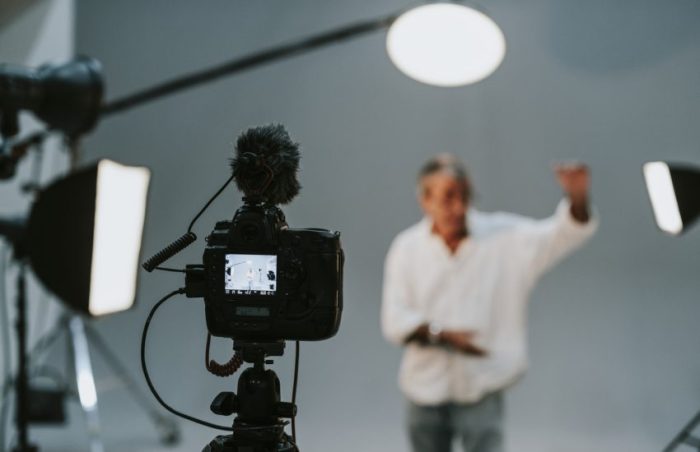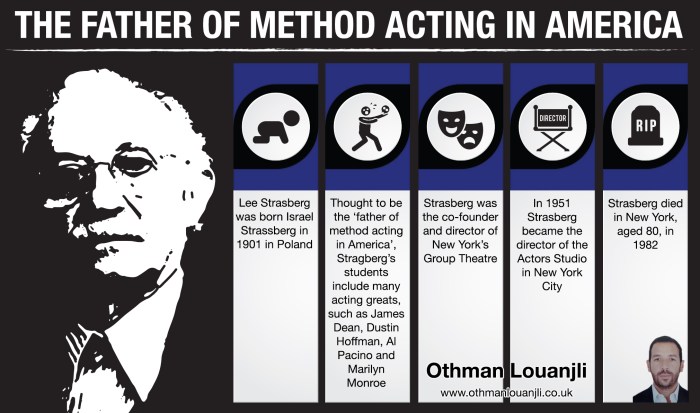Embark on a journey into the world of acting with How to Act: 10 Acting Techniques for Beginners, where you’ll uncover essential skills to kickstart your acting career.
Learn about the core concepts behind acting techniques and how they can elevate your performances to new heights.
Acting Techniques Overview

Acting techniques refer to the various methods and approaches that actors use to portray characters convincingly on stage or screen. These techniques help actors develop their skills, emotions, and physicality to deliver authentic performances.
Mastering acting techniques is crucial for beginners as it provides them with a solid foundation to build upon. These techniques help actors connect with their characters, understand their motivations, and effectively convey emotions to the audience. By learning and practicing these techniques, beginners can enhance their performances and become more versatile actors.
Common Acting Techniques
- Method Acting: A technique where actors draw from their own personal experiences to connect with their characters emotionally.
- Meisner Technique: Focuses on truthful reactions and listening to scene partners to create authentic performances.
- Chekhov Technique: Emphasizes the use of imagination, psychological gesture, and body movement to embody characters.
- Stanislavski System: Involves creating a detailed backstory for characters and exploring their objectives and motivations.
Importance of Mastering Acting Techniques
Actors who master these techniques can improve their ability to portray a wide range of characters convincingly. By understanding the principles behind each technique and practicing regularly, actors can refine their craft, develop their skills, and deliver powerful performances that resonate with audiences.
Physical Acting Techniques

Body language plays a crucial role in acting as it helps convey emotions, intentions, and the overall essence of a character to the audience. The way an actor uses their body can significantly impact the effectiveness of their performance.
Importance of Body Language in Acting
- Body language can communicate emotions and thoughts without the need for words.
- It helps actors create a more believable and authentic portrayal of their characters.
- Physicality adds depth and dimension to a performance, making it more engaging for the audience.
Physical Acting Exercises for Beginners
- Body Awareness: Practice being mindful of your body movements and gestures in everyday situations.
- Improvise Movement: Engage in improvisational exercises that involve using your body to express different emotions or scenarios.
- Mirror Exercise: Stand in front of a mirror and mimic various expressions and gestures to understand how they come across visually.
Enhancing Character Portrayal through Physicality
- By paying attention to body language, actors can bring more depth and nuance to their characters.
- Physicality can help differentiate between characters and make each one unique and memorable.
- Using physicality effectively can create a more immersive experience for both the actor and the audience.
Tips for Developing Physical Acting Skills
- Study and observe how people in real life use their bodies to express themselves.
- Take dance or movement classes to improve flexibility, coordination, and body awareness.
- Experiment with different physical choices for your characters to see what works best for each role.
Emotional Acting Techniques

Acting is not just about delivering lines; it’s about conveying emotions authentically to the audience. Here, we will delve into the importance of emotions in acting and various techniques to connect with a character’s emotional depth.
Connecting with Emotions
In order to portray a character effectively, actors must be able to tap into their own emotions and understand how those emotions can be translated into the character they are portraying. Here are some methods to help actors connect with their character’s emotions:
- Researching the character’s background and motivations to understand their emotional journey.
- Utilizing personal experiences to draw parallels and find emotional resonance with the character.
- Practicing empathy to step into the shoes of the character and feel what they feel.
Emotional Exercises
Actors often engage in various exercises to hone their emotional range and improve their ability to convey different emotions convincingly. Some common emotional exercises include:
- Emotional memory: Recalling past experiences that evoke specific emotions to access genuine feelings.
- Sense memory: Using sensory details to trigger emotional responses and create a more vivid portrayal.
- Improvise emotional scenes: Acting out spontaneous scenarios to practice reacting authentically in the moment.
Importance of Emotional Authenticity
Emotional authenticity is crucial in acting as it allows the audience to connect with the characters on a deeper level and makes the performance more compelling. When actors genuinely experience and express emotions, it creates a sense of truth and realism that resonates with viewers, making the story more impactful and memorable.
Last Recap

In conclusion, mastering these 10 acting techniques will undoubtedly set you on the path to becoming a proficient and versatile actor, ready to tackle any role with confidence and skill.